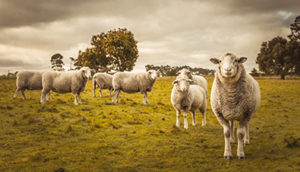Read the latest information on
Foot-and-mouth disease
 The final numbers are in, and 2019 has proven to be another record-setting calendar year for the National Sheep Health Monitoring Project (NSHMP), with around one-third of all sheep slaughtered in Australia being inspected by a participating abattoir.
The final numbers are in, and 2019 has proven to be another record-setting calendar year for the National Sheep Health Monitoring Project (NSHMP), with around one-third of all sheep slaughtered in Australia being inspected by a participating abattoir.
Run by Animal Health Australia (AHA) with the support of sheep industry organisations Sheep Producers Australia and WoolProducers Australia, the NSHMP is designed to capture information on health conditions which either affect the productivity of the sheep, or cause carcases to be trimmed during processing, both of which impact profitability for the producer.
AHA’s Senior Manager Biosecurity, Dr Rob Barwell, says that the NSHMP continues to deliver value to the thousands of properties whose sheep have been inspected over the 12 months.
“In 2019 we monitored 9.57 million sheep, across 42,000 separate lines from 9,600 individual PICs,” Dr Barwell explained.
“According to Meat & Livestock Australia, around 29.2 million lambs and sheep were slaughtered in Australia in 2019 – this means our participating plants inspected around one in every three sheep processed last year.”
The NSHMP monitors for 19 conditions automatically when sheep are consigned to participating abattoirs, plus Johne’s disease on request by producers. Producers are then able to access the health data of sheep they have consigned to the abattoir through the Livestock Data Link portal – managed by Integrity Systems Company – using their NLIS login details.
“The conditions we monitor for are endemic in many regions of Australia and can hit you in the hip pocket, though you might never see signs or symptoms on the farm,” Dr Barwell explained.
“What this means in practice is that carcases and offal must be trimmed or condemned at the plant, meaning less money paid to you.”
“By knowing when and where these conditions are impacting sheep, and feeding that information back to flock managers, we can improve liveweight gain and limit wastage, which is good for everyone.”
Full lists of both conditions monitored and participating abattoirs can be found via the AHA website.
Producers can find out more about Livestock Data Link via Meat & Livestock Australia.
“If you’ve been sending sheep to slaughter, the odds are good that you already have some data available,” Dr Barwell explained.
“If we can all make a small difference on our own farms, it adds up to a big difference to the industry as a whole.”